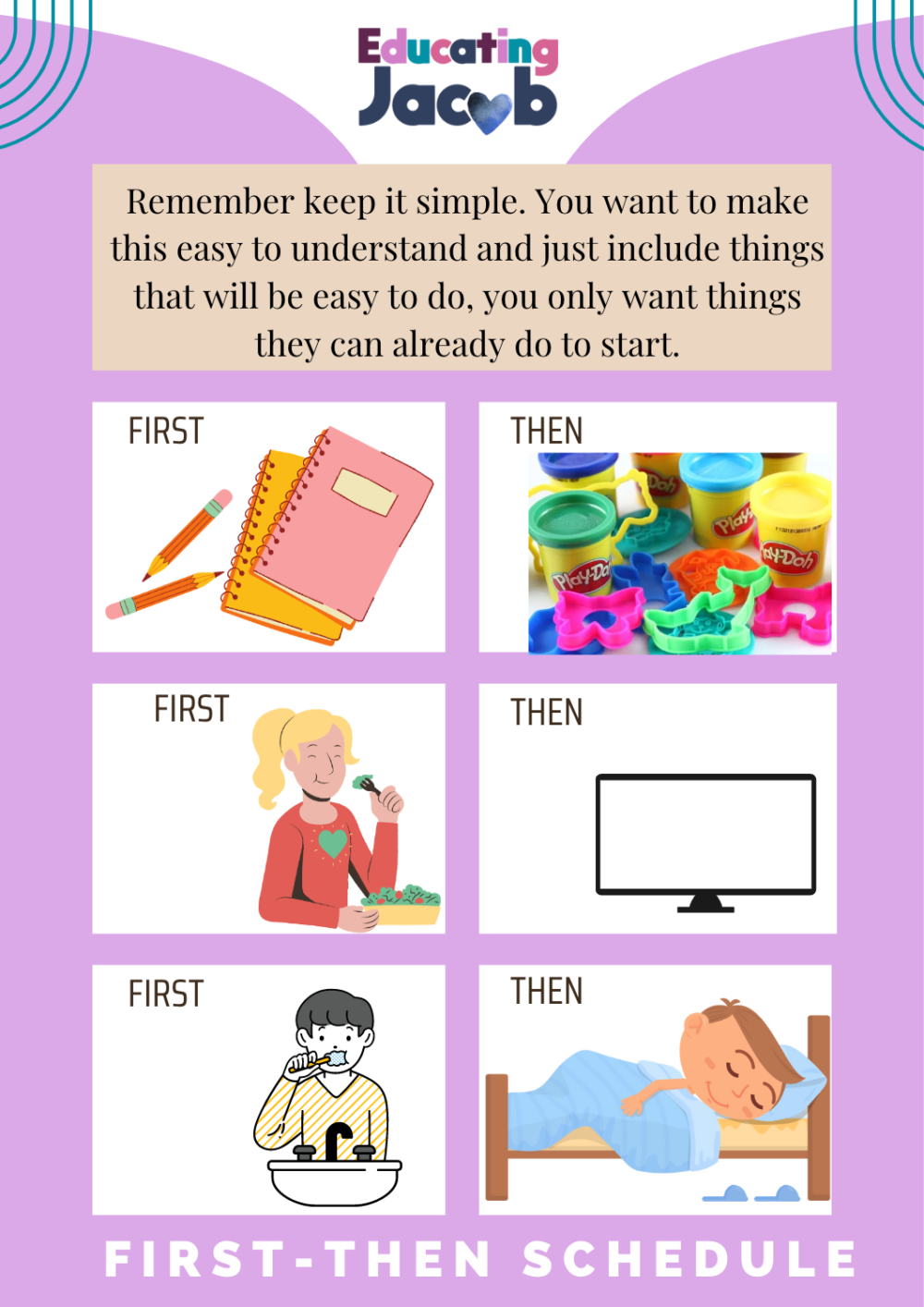Create an autism friendly summer schedule for your child!

Why do I need a summer schedule? Children with autism or any learning disability need help understanding their day and transitioning. A routine will help reduce anxiety and meltdowns because the child will understand what’s expected of them and what is coming next.
Like me, my students are looking forward to summer break. Without a plan or schedule, they may cause a lot of chaos at home. Parents are wondering, “What in the world? How can you be unhappy when you have no alarm clock and all this free time to do what you want?”
I understand, I’ve asked myself the same question as a mom and a teacher! As a mom, it felt like I didn’t have one free minute with the kids home unless they were in bed at night. I was tired and wondering why my home was so chaotic.
With Jacob, there were meltdowns, chaos, and frustration for the whole family. Because he has trouble with conversations and communication, walking into the room and asking him to do things almost always resulted in meltdowns or some form of resistance.
I figured out how to create autism friendly schedules:

Once I figured out that schedules could be used to show Jacob his day without verbal communication (demands), we started getting somewhere. In the schedule above each line has multiple steps. He has done some version of this for years so it’s easier now. My home was free from the chaos of meltdowns, anxiety, and rebellion that had me frazzled and frustrated as a mom.
Schedules should start very simple and become a full day or week of activities. You can even do monthly schedules once your child understands what’s happening and is happy using them.
To start, my first summer schedule was a : First – Then schedule.

To start, my first schedule was a First – Then. Meaning, first you do this…. Then you get this. After this is accomplished and your child is successful, then you can add another task. You can make a list and use pictures. There are so many different ways you can create a schedule and make it fit your life and your child’s needs.
Jacob’s daily work schedule always has a small chapter book of some kind to keep him reading. During the summer Barnes and Noble usually offers free books to kids who read and turn in their list. Ours is in Fayetteville, NC. Here is the pdf link if you are interested! BNKidsSummerReading85x11 http://chrome-extension://efaidnbmnnnibpcajpcglclefindmkaj/https://dispatch.barnesandnoble.com/content/dam/ccr/bnstores/kids/misc/2023/BNKidsSummerReading85x11.pdf
Jacob is now 25 years old, and we use a monthly schedule to:

Jacob is now 25 years old, and we use a monthly schedule to keep track of shaving, haircut, etc. Doctor visits and Mom and Dad’s schedule is also posted. He has Monday-Sunday zippered bags that have activities (worksheets, small chapter books, etc.) that are daily. He also has daily things on his schedule, like breakfast, taking meds, taking a shower, etc.
When we started this journey, there were so many things going through my mind and scaring me about the diagnosis of autism that creating a schedule never entered my mind as something that would help us so much.
A summer schedule for a child with autism is crucial for several reasons:
- Predictability and Structure: Children with autism thrive on predictability and structure. A summer schedule gives them a sense of routine and familiarity, which can help reduce anxiety and meltdowns. Knowing what to expect throughout the day can provide security and stability.
- Visual Representation: Children with autism often benefit from visual support. A visual schedule, with pictures or symbols representing each activity, helps them understand and anticipate the sequence of events. It serves as a visual reminder of what comes next, smoothing transitions and reducing confusion.
- Enhancing Communication: For children with communication challenges, a schedule is a non-verbal way to understand and communicate their needs and activities. It can help them express their preferences, make choices, and participate in planning their day.
- Promoting Independence: A structured schedule empowers children with autism to develop independent skills. They can learn to follow the schedule, complete tasks independently, and take ownership of their daily routines. This promotes self-confidence and self-reliance.
- Facilitating Skill Development: A summer schedule can include activities targeting specific skills or goals. It allows for intentional planning of activities that promote learning, socialization, sensory integration, communication, and other areas of development. By incorporating therapy or educational activities into the schedule, the child can continue progressing during the summer months.
- Supporting the Whole Family: A schedule benefits not only the child with autism but also the entire family. It provides a structure for the family’s daily life, reduces chaos and stress, and ensures everyone is on the same page. Schedules help parents and caregivers plan and organize their time effectively, knowing what activities or support the child needs at specific times.
Summer Chaos Free:

I am happy to report that as a mom and special education teacher, schedules help me to communicate with Jacob and my students and also decrease anxiety during the day. School teachers will also say that schedules are necessary to keep everyone on track and developing skills.
Every child is unique!
Remember, every child with autism is unique, so the summer schedule should be tailored to their individual needs and interests. It should balance routine and flexibility, allowing for spontaneous activities and free time while maintaining a basic structure.
